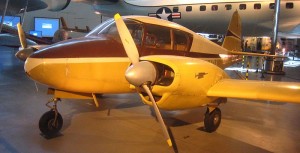If you look at the Piper Apache head on, it looks a bit like a potato. A potato with wings and smaller spuds on the wings that house Lycoming engines of different sizes.
Originally, the Piper PA-23 came out with 150 horsepower engines, hence, the designation of PA-23-150. Piper built more than 2000 of the airplanes with 150 hp engines. By the time the airplane reached the “E” model, they changed the engines up to 160 hp. The final variant of the Apache was the PA-23-235, which had a stretched fuselage and one additional seat. Piper built only 115 of this model Apache.
After the PA-23-235, the airplane got a couple of 250 hp engines and designated the PA-23-250. At the same time, the name changed to “Aztec.”
The Aztec had a stretched fuselage and two more seats in addition to the larger engines. This airplane retained the docile flying characteristics of the Apache while proving to be one of the best light twins on the market.
While the Aztec proved well as a people and cargo hauler, the Apache served mostly as a multi-engine trainer. With smaller engines, the airplane had a lower fuel flow, making the airplane an economical option for training.
Additionally, the smaller engines allowed for a lower Vmc while operating on one engine. The airplane also flies very well on one engine, in part, due to the thick-cambered high-lift wing for which many Piper aircraft are famous.
With conventional turning engines, the airplane aptly demonstrates Vmc to new ME trainees. At the same time, the SE flying characteristics are benign and safe enough for low-time pilots.
By the numbers, the aircraft cruises in the 135 to 155 knot range depending in power setting. At those speeds, full flow is 16 to 20 gph. You could even reduce the power settings and airspeeds to cruise about 125 knots with a fuel flow of about 14 gph.
The first time the new ME trainee climbs into the Apache, he or she gets the feeling they are in a real airplane. The cockpit is large and roomy compared to the smaller SE airplanes.
The airplane is also heavier, but by not too much. It is a very good airplane to transition between lighter singles to multi-engine airplanes and then to heavier aircraft.
For her mission, the Apache is well fit for her role as a ME trainer. In the role of “real ME airplane,” the airplane comes up a little short. Not enough seats, not enough speed, not enough payload.
And she still looks like a little “Spud” plane.
-30-
©2010 J. Clark


Pingback: Aviation News January 9, 2011 :: N8JW